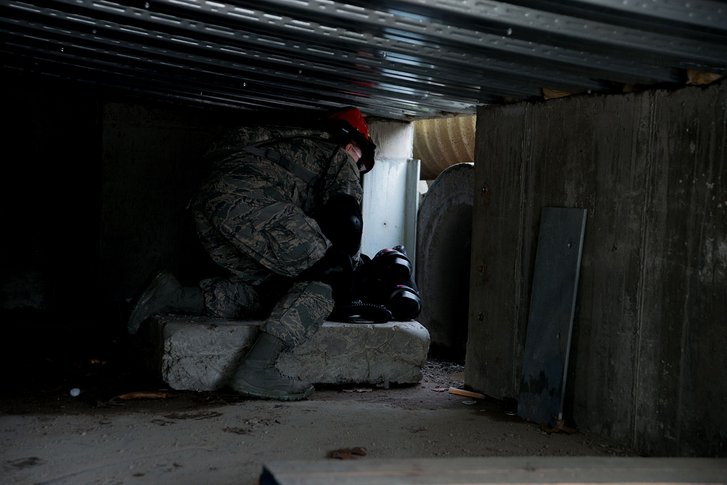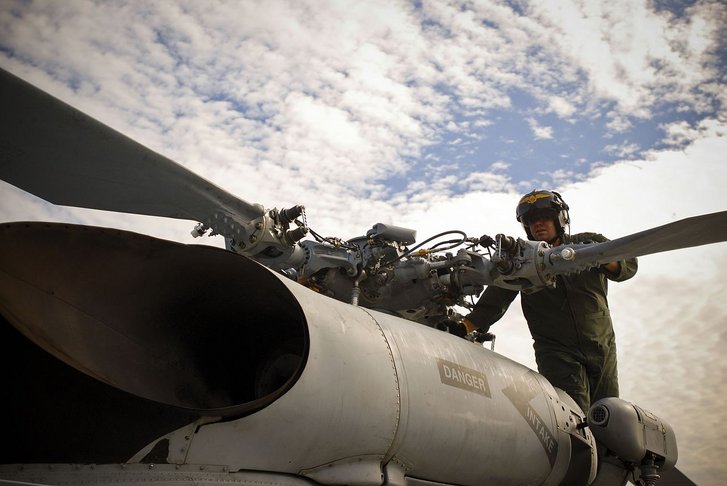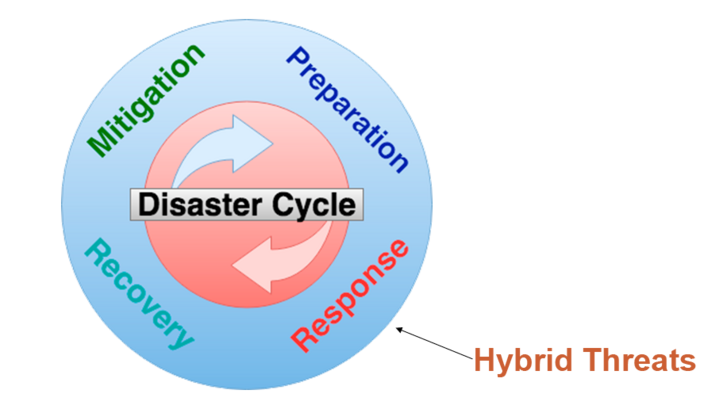Hybrid Threats, Disaster Relief and the Military - a Challenge for South Eastern Europe/Western Balkans

Almost every day, we hear or read about attacks, acts of sabotage, or natural disasters from all around the world. Are these hybrid threats or did they happen by coincidence? Is a natural disaster a hybrid threat at all? And which role has the military after disasters – are they only “security providers” or can they be used for rescue and humanitarian operations as well? How will a disaster - and maybe missing resilience - influence states, especially fragile states? Is there a link to Common Foreign and Security Policy (CFSP)? This article will attempt to answer all of these questions and furthermore provide a short analysis on possible disasters in the region of the Western Balkans and ones that have already occurred.
Disasters
Expressed in a simple way disasters can be differentiated into natural disasters and man-made disasters (incl. technological disasters). Natural disasters are e.g. floods, volcanoes, drought, tsunamis, forest fires, earthquakes, whereas man-made disasters are e.g. industrial accidents, transport accidents but also civil unrest, terrorism, sabotage, war etc.
According to the newest report of CRED (Centre for Research on the Epidemiology of Disasters) there were fewer natural disasters, deaths and total people affected in 2017 compared to the previous decade (2007- 2016). Most disasters occurred in Asia (136) and the Americas (93), followed by Africa (42), Europe (39) and Oceania (8).
In 2017, worldwide 335 natural disasters affected over 95,6 million people, 9697 people were killed by these disasters with an economic loss of a total of $335 billion. However, compared to the years 2007 to 2016 there was lower mortality (9,697 instead of 68,274 dead people) but much a higher economic loss (increase from $142 billion to $335 billion).
In this analysis, a disaster is defined as “a situation or event that overwhelms local capacity, necessitating a request at the national or international level for external assistance; an unforeseen and often sudden event that causes great damage, destruction and human suffering”.
Hybrid Threats and Disasters
In previous days, it was easy to determine when a conflict occured - in most cases it was one force against another one. Nowadays – due to the so-called hybrid warfare (“a tailored mix of conventional weapons, irregular tactics, terrorism, and criminal behaviour in the same time and battle space to obtain political objectives) – it´s not as easy as it was before. Frank G. Hoffman mentioned in his book “Conflict in the 21st Century” the rise of hybrid wars – that there are many unique combinations of different threats, aligned to national vulnerability, which he then called “hybrid”. The concept behind hybrid threats aims “to capture the mixture of coercive and subversive activity, conventional and unconventional methods (i.e. diplomatic, military, economic, technological), which can be used in a coordinated manner by state or non-state actors to achieve specific objectives while remaining below the threshold of formally declared warfare”.
Following the definition of the Austrian Defence Academy/Institute for Peace Security and conflict management, a “Hybrid threat” is the endangerment of a state or confederation of states through the ability and intention of an actor, to use his potential target-oriented, multidimensional (political, economical, military, social, medial et cetera) and in a timely coordinated context for the implementation of his interests.
According to the previous simplified definition of disasters into natural disasters and man-made disasters, one must find out if disasters are hybrid threats or not. Natural disasters are - generally speaking - not hybrid threats as long as e.g. somebody does not try to cause a drought by changing the river bed to reach his interests therefore forcing people to leave their land. Man-made disasters could be caused by a hybrid thread - e.g. if someone uses a terrorist attack against a dam or cyber-attack on a computer system to open the water gates of a dam causing a regional flood - but only if there is the intention to reach a specific strategic goal. Hybrid threats are generally intentional and must have the interest to threaten a state or confederation of states.

An interesting linkage between civilian - military and hybrid threats is explained in the statement of Mr. Orjan N Karlson, Specialist Director at the Norwegian Directorate for Civil Protetction / DSB (published in the latest Crisis Response Journal about “Hybrid warfare as a societal threat”). He wrote that, first and foremost, there is a need for an integrated, or at least well-co-ordinated, national civil-military command structure to overcome those hybrid threats.
Another hybrid threat can occur after a disaster - misinformation (which even can stop rescue operations like in New Orleans in 2005 after Hurricane Katrina) and loss of trust towards the government. For example, after an explosion of 96 containers full of gunpowder in Cyprus on 11th July 2011 there were every day media reports about uranium, which might have been in those containers. Nobody believed the official reports by the government and every day there were violent demonstrations in the capital Nicosia held by angered citizens, leading to the resignation of several ministers and high-ranking persons. There was a loss of trust in the Government and their reports of the ministries. The only chance to solve this misinformation problem on uranium was to fly in an Austrian military CBRN expert to take measurements on site and inform the population that there was not more radiation than normally measured on site. In this case, Cyprus was able to cope with the situation – but what would have happened in states that are actually more fragile? Wouldn´t it lead to more fragility – like a cycle of fragility and disasters? Each disaster puts already a lot of pressure on the government and hybrid threats increase this pressure a lot. This makes hybrid threats in the context of natural disasters so dangerous.
Crimes after disasters
When talking about hybrid threats and disasters people often mean that there is an immediate increase of crimes after a disaster event and therefore a need for security forces et cetera. It is correct that after major disasters, the crime rate could potentially increase, but many times, it actually decreases. An Example: In the week after Hurricane Sandy (Oct 2012) in New York City murder rates went down by 86%, rape by 44%, theft by 48% and robbery by 30%, although burglary went up by a mere 3% ( perhaps as a result of diminished structural integrity and lessened security).
But one crime that is often prevalent following natural disasters is looting. Simplified, it is the indiscriminate taking of goods by force as part of a victory (military or political), or during a catastrophe (natural disaster - where law and order are temporarily ineffective; conflicts etc.).
Following 2005’s Hurricane Katrina, much of New Orleans experienced widespread looting and violence, as there were large devastated areas without police presence. In the first days there was looting of supermarkets and pharmacies etc. even shooting was reported by journalists, but also by the mayor Ray Nagin, the police superintendent Edwin Compass and others. Quite often, it was only misinformation, which sometimes even caused halts of rescue operations. However, it is extremely interesting to see that, when the official authority (police) disappears, that other parties will immediately use these “stateless spaces”. In New Orleans, the police was not able to enter the Ernest N. Morial Convention Centre, where thousands of people were sheltered, without the support of the National Guard, which calmed the situation. There is often a need for “security forces” besides police forces.
But crimes after disasters should also not be overestimated - after tropical storm Harvey in August 2017, there were about 63 people charged with storm related crimes (out of a population of nearly 5 million people in Harris County including Houston city).The impacted community is held together by a sense of collective efficacy. But crimes of opportunity, such as looting and robbery, are common following devastating disasters.
This was seen repeatedly in the aftermath of Katrina, when individuals had to fight to find food or water, it meant looking out for himself/herself. They had to do whatever it took to find water for their kids or food for their parents. But when these basic needs were met, people began to look out for each other, to work together and reconstruct a community. If the relief organizations had been able to saturate the city with food and water in the first two or three days, the desperation, frustration and “ugliness” would not have set in. When the official authority is gone, often also the personal security feeling lacks. Then, nobody cares about private property- the survival instinct sets in. But in countries, where e.g. Community Disaster Committees are established which offer help and support, looting does not really exist.
When the police is involved in search and rescue operations and those are then taken over by other first responders, there is less need for police involvement in these activities. Then the police can concentrate their efforts on maintaining law and order and protecting property. This is their first priority and only if they are overwhelmed military forces will be used as additional “security providers”. Normally military forces are only used for rescue operation according to existing guidelines (Oslo Guidelines, MCDA Guidelines, et cetera).
Military in disaster relief operations
Whenever a bigger disaster occurs there will also be offers from foreign military forces to assist the affected country. But is it appreciated to get foreign military into a country? Sometimes the affected country itself does not want to get assistance from other foreign forces, sometimes people fear it could be an invasion in the end (e.g. there were a lot of discussions about that in Haiti when the US brought in additional forces; or after the earthquake 2015 when Chinese Forces entered Nepal areas where they had been operating during the civil war in support of the Maoist insurgents). Sometimes other humanitarian organisations do not like military on site - they fear that it is endangering their operations or that the military will take control over the relief operations.
But how is the reality? How does it work? In all my nine United Nations Disaster Assessment and Coordination missions as well as the two European Union Civil Protection missions - foreign military was always involved to a certain extent. Normally the national military forces of the affected country are the first involved, and afterwards - if requested and/or permitted - there will be foreign military forces on site. The situation changed in the last 12 to 16 years significantly. During the floods 2000 in Mozambique foreign military was warmly welcomed, the same happened in 2005 after the Tsunami, but afterwards there was a change to more and more resistance from the “Humanitarian World” to use foreign military in disaster relief operations. There is always the question - is this really the last resort and needed?
During the Tsunami operation in SE Asia in 2004 more than 30.000 troops from 35 countries were involved and coordinated via our Regional Coordination Centre in Utapao/Thailand. Even in Pakistan after the floods 2010 - besides numerous military troops from Pakistan - a high amount of foreign military was involved in disaster response. And nowadays - the reality is – that you will always meet foreign military assets on disaster sites to support the rescue operation, sometimes they are even the “first resort” as they are the only ones who have specific assets needed. It is most important to find ways on how to cooperate.
Since several years the Austrian Armed Forces conduct together with the Austrian Development Agency and the Austrian Study Centre for Peace and Conflict Resolution training courses on Humanitarian Assistance in West Africa (HAWA) - where military, police and civil society (gender balanced) are involved in each course. This is a very valuable course, because it is used to break down existing walls between the three entities. It was developed in a modular way so that one simply can adapt it to other regions worldwide.
Disasters in Western Balkans
When talking about disasters in the Western Balkans it is necessary to find out the main disaster risks for each country. For the following overview the INFORM INDEX, which is a global, open-source risk assessment for humanitarian crises and disasters, is used. In general - main disaster risks in the Western Balkans are floods, earthquakes, forest fires and smaller tsunamis as well as man-made disasters (Impacts from old industries, etc.). Below, you find an overview of risks linked to the Western Balkan countries (a lower value - closer to 0 - always represents a lower risk and a higher value - closer to 10 - always represents a higher risk).
Influence of hybrid threats on disasters and resilience
Is there an influence of hybrid threats and conflicts on disasters? If so, what can be done against it? And how is resilience linked to those threats?
“Resilience” in security policy means resistance of societies and political systems. It means the ability of a community or society to successfully overcome, adapt or recover threats in an appropriate time, so that vital fundamental structures and basic functions are preserved or recovered.
After a disaster occurred, it can happen that there are distribution fights between the concerned population as there might be lack of food, water and other vital items which people would need to survive. After a disaster occurred, it can happen that there are distribution fights between the concerned population as there might be lack of food, water and other vital items which people would need to survive. People generally support each other more in smaller communities but if people must leave their homes and property as internally displaced persons (very often with no possessions), there is a potential for social conflicts. The less a community is prepared in advance (no development of resilience), the more the effects of a disaster will hit it in different ways.
Currently (13th Sept 2018), Hurricane Florence is making landfall at the US East Coast. In this context, the Head of Federal Emergency Management Agency/FEMA Mr. Brock Long says that there is no “preparedness culture” in the United States. Americans are not prepared when it comes to natural disasters. It is feared that the impact after the landfall will be tremendous. However, isn’t this the case with all nations? Are they resilient against major disasters? Was there enough resilience in South Eastern Europe for the floods in 2014? One of the most important learnings was that there is a special need for more preparedness and prevention against disasters. Preparedness and prevention are vital. The EC estimates that for every Euro that is spent on Disaster Risk Reduction activities, four to seven Euros are saved that would have been spent on response and recovery activities.
One of the effects of a disaster and of limited resilience is that it could lead to destabilisation of a whole government so that those states leave the area of stability and become permanent fragile states. Those are the states, which offer at the end less resilience against natural disasters and hybrid threats. They become less and less stable and are not able to leave this negative spiral.
Hybrid threats are challenging states to an unknown extent. It can be expected that once a state is challenged by a disaster, it also might come to hybrid attacks to weaken the state. For example, even after a disaster occurred, it happened that rebels tried to affect people when they tried to remove rubbles (e.g. Algeria earthquake 2003). As far as I know, most of the analysis done in South Eastern Europe/the Western Balkans was done on hybrid threats linked to conflict and fighting against terrorism. But beyond the analysis is there enough information and preparedness and how to be resilient against these threats?
To build up resilience it will be very important to conduct assessments and analysis of the situation on Disaster Risk Reduction/DRR and disaster management in the whole region and beyond. It is necessary to include the risk of hybrid threats to disaster preparedness strategies, but they must be included in all planning phases.
It is utmost to create strong cooperations with neighbouring countries, as well as cooperations with the European Union to develop and set up a modern disaster management system to meet effects of natural disasters and hybrid threats. In the South Eastern Europe/Western Balkans region, several regional initiatives already exist, for example the Disaster Preparedness and Prevention Initiative (DPPI) which conducts disaster management training programs since over 18 years. Another example is the “Instrument for the Pre-Accession Assistance” (IPA) e.g. for floods. However, more should be done by the EU, eventually in a common “European way”.
In the Sofia Declaration, the EU welcomes the contribution of the Western Balkans partners to its Common Foreign and Security Policy (CFSP) in all its aspects and expects a progressive deepening of cooperation in this area, especially an enhanced level of alignment, notably on issues where major common interests are at stake (Art 13.). Disinformation and other hybrid activities will be fought together through greater collaboration in resilience, cyber security and strategic communication (Art 14.). This means that there is a need for closer cooperation to especially strengthen resilience in the region.
In June 2018, the European Union also developed a strategic paper: “A Europe that Protects: countering Hybrid Threats”. In this paper Europe’s attitude is: “Awareness, resilience and response are at the heart of EU action to counter hybrid threats. We are improving our capacity to detect and understand malicious activities at an early stage. At the same time, we are enhancing the resilience of our critical infrastructure, our societies and institutions. This is fundamental to improve our ability to withstand and recover from attacks. Countering hybrid threats requires action mainly from Member States, as well as closer cooperation between the EU, the Member States, partner countries and NATO.”

Additionally, the Sendai Frameworks (2015 – 2030) with its seven Global Targets and its four Priorities for Action gives a good guidance for activities in the region, especially with its priorities - 1. Understanding disaster risk; 2. Strengthening disaster risk governance to manage disaster risk; 3. Investing in disaster risk reduction for resilience and 4. Enhancing disaster preparedness for effective response and to “Build Back Better” in recovery, rehabilitation and reconstruction.
In the latest publication “Balkan futures Three scenarios for 2025”, Wildcard 5 - Natural disasters devastating the region there is an excellent short summary about natural disasters at the Western Balkans: “Over the course of history, the Balkans has been devastated by earthquakes and floods. Natural disasters have occurred sporadically in several Balkan countries, creating significant destruction and leading them to call on the assistance of other neighbouring countries. Heavy rain and floods like those in Bosnia and Herzegovina and Serbia in 2014, or earthquakes in Montenegro, the former Yugoslav Republic of Macedonia, or Albania, might result in regional cooperation to alleviate the consequences of a disaster.”
Conclusion
Hybrid threats might lead to disasters or increase the effects of a previous natural or technical disaster and can even challenge the affected states more than necessary. Against hybrid threats - not only for South Eastern Europe/Western Balkans - but globally - it is necessary to build good resilience. Resilience is much higher when the population is well informed, cooperates in an excellent way, has good structures, supports each other in the case of an event and has excellent networks with neighbouring countries, regional and international organisations.
Each emergency puts already a lot of pressure on the affected state and might be at the same time an opportunity for hybrid threats too. Therefore, it is necessary to increase normal resilience not to trap into this pitfall. Otherwise, a disaster situation might be used for hybrid scenarios, which again will have cascading effects. It might be recommendable to create a “Common Task Force” to analyse the Western Balkans States in risks of hybrid threats and disasters and prepare them for disaster prevention and response. This could be done similar to regional initiatives, like DPPI, IPA etc.
In major disaster events beside national military forces, also foreign military forces, support rescue operations (Tsunami, Pakistan). In the frame of Civil Military cooperation, it would be fruitful that the Austrian Armed Forces develop closer cooperation of South Eastern Europe/Western Balkans in the context of disaster prevention, preparedness and response.
At the same time, it makes sense to develop a strategy for a “Resilient Citizen” - on an individual and family basis - so that they are better informed and prepared for the worst case. The responsible state should strengthen measures against their main disaster risks like flood, earthquake, forest fires, tsunami as well as possible hybrid threats (Cyber-attack, misinformation…) to be resilient, simplify response and reduce costs and loss of lives.
Therefore, the Western Balkan States should try to get together in a regional civil military cooperation to easily overcome natural disasters and hybrid threats with joint planning, common training and common operations.
Brig Prof. Mag. Dr. Alois A. Hirschmugl; Regional Command of Styria/Austria.
















